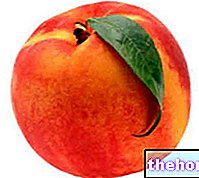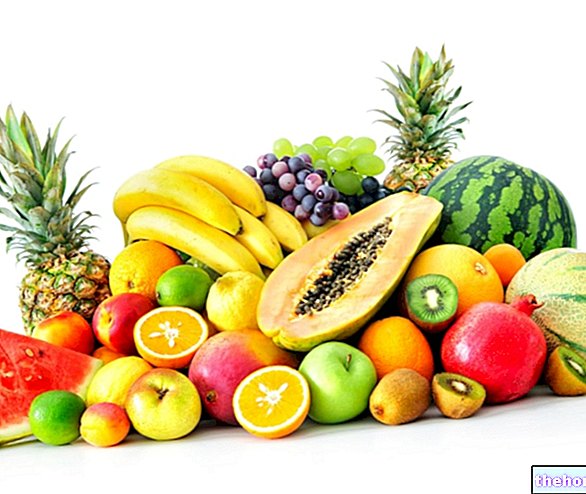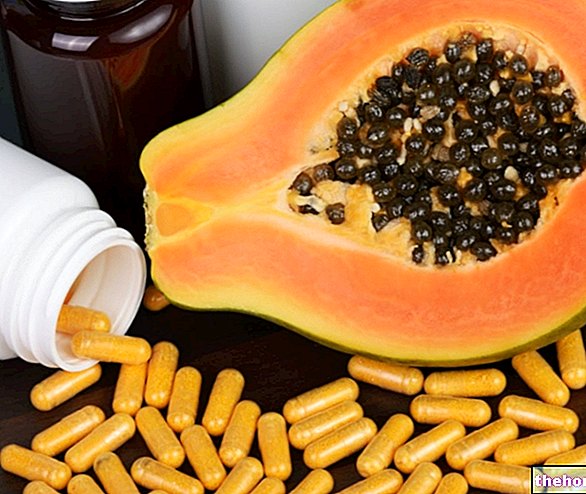Introduction
The date is known by many only as a real calorie bomb; few are aware of the numerous therapeutic properties of this fruit of di Phoenix Dactylifera, as extraordinary and prodigious as they are unknown and ignored. In this article we will give a general - but at the same time in-depth - description of the date plant and, subsequently, we will describe the fruits in terms of nutritional values and therapeutic indications.

Generality
Date is the name commonly attributed to the fruit of the palm tree Phoenix Dactylifera (fam. Arecaceae): it is a long-limbed and imposing tree, which reaches high heights reaching even 20 or 30 meters. Typical fruit of northern Africa and western Asia up to the Tigris and Euphrates rivers, the date is characteristic of countries with a warm climate: in fact, it is currently cultivated in the Mediterranean areas, in Arabia, in the Persian Gulf, in the Canaries and in America Southern.
It is surprising how long-lived and productive the date palm is: some species begin to produce fruit already after three years and can live up to three centuries; under certain conditions - particularly during the full maturity of the plant (around 30 years) - date palms can produce over 50 kilos of fruit annually.
Botanical description
The date palm develops rapidly: the powerful roots dig into the ground, supporting the plant's body and seeking nourishment in the deeper layers of the soil.
The trunk of the date palm, rough and wrinkled, is covered with scales, residues of the peduncles of old leaves. The leaves, rigid greenish fronds up to three meters long, form a sort of crown on the top of the tree, typical of palm trees. The flowers, grouped in panicles, are small and yellow, while the dates are sweet fruits containing a woody seed. [adapted from Reasoned dictionary of herbal medicine and phytotherapy, by A. Bruni]
Description of the fruit
As we have seen, the fruits of Phoenix Dactylifera are the dates: these are fleshy berries ovate at the ends, with a very sweet and pleasant flavor. The name "date" derives from the Greek daktilos, which means finger.
The dates have an oblong shape of brownish-brown color; inside, they contain a single woody, hard and pointed seed; they are wrapped in a thin and fragile film. The dates, in the ears, gather in dense clusters of 200 or even 1,000 fruits each.
There are two types of dates, with hard or soft pulp: the former are particularly renowned by Arab countries, therefore they are mostly cultivated and marketed. Soft dates, more fleshy, are particularly appreciated in European and American countries.
Most dates are subjected to a drying process, in order to increase the sugar concentration and prolong their storage times. However, some varieties of dates (remember: Berhi and Hiann) turn out to be suitable to be consumed fresh. The dates of Israel are certainly the most prized, fleshy and big.
Nutritional properties
Given the high energy power, the consumption of dates is not recommended for those who follow a low-calorie diet, while it can be recommended during energy diets, especially in case of physical weakness and fatigue: dried dates provide, in fact, about 253 calories per 100 grams. They consist of 50-70% sugar (carbohydrates), 20-30% water, 2.7% protein and 0.60% fat. Given the low protein content, dates are suitable even in low-protein diets.
Furthermore, the pulp of the fruit is a source of magnesium: the date palm - in particular from the Saharan areas - grows in hostile, sandy soils rich in magnesium salts. In this regard, the date, which like a sponge absorbs the minerals from the soil, represents a mine of this important mineral (it contains approximately 50-60 mg of magnesium per 100 g of product).
However, magnesium is not the only mineral contained in the date; it also remembers iron, potassium, copper, zinc, calcium, manganese and phosphorus.

Use in the kitchen
Clearly, dates can be tasted "natural", taking care to remove the pointed seed before eating the fruit; in the culinary field, dates go perfectly with cheeses and mascarpone, or with dried fruit such as walnuts, almonds or hazelnuts. Furthermore, dates are also used to decorate desserts.
Stuffed Dates - Delicious Christmas appetizer
Problems with playing the video? Reload the video from youtube.
- Go to the Video Page
- Go to the Video Recipes Section
- Watch the video on youtube
The fleshy dates, those with soft pulp, are sometimes used to prepare honeys (or, better to say, syrups). Date "honey", an excellent substitute for sugar and butter in cooking, is obtained simply by blending ripe dates (soft ones are recommended), possibly adding very little water to favor the mixture.
Hard dates, on the other hand, can undergo drying processes to be subsequently reduced to flour. Date flour is generally mixed with barley flour in order to prepare the well-known date bread, a specialty of Arab countries.
The so-called date wine it is obtained instead from the fermentation of the homonymous fruits, left to macerate in water: specifically, it is arrak, a liqueur wine similar to brandy, very popular in Sri Lanka and India.
The date kernels, after roasting, are sometimes used as a coffee substitute.
From the trunk of the mighty palm, a sort of milky solution is obtained, with an original and sweet flavor: when left to ferment, this milk transforms into the so-called laghbì, or laghbì, a very particular euphoric and intoxicating drink [taken from Reasoned dictionary of herbal medicine and phytotherapy, by A. Bruni]
Use in phytotherapy
As mentioned in the "incipit of the article", the date has a lot of therapeutic potential, for many unknown.
It is said that the date is among the four pectoral fruits (together with jujubes, grapes and figs): used in decoction, in fact, dates are useful in case of sore throat. Furthermore, the date decoction is also useful for alleviating inflammatory symptoms of the intestine. Again, in case of bronchitis, the date decoction boasts powerful anti-catarrhal and emollient activities.
As we have analyzed, the date is a source of iron and magnesium: in this regard, the fruit is presented, respectively, as an aid against anemia, and a tonic for nervous and muscular activity, as well as stimulating. Due to the many mineral salts, the consumption of dates is also used as a natural remineralizer. [adapted from Treat yourself with fruit and vegetables, by A. M. Mauri]
Other uses
Date palms are also used in the homeopathic field: it seems, in fact, that the mother tincture obtained from the bark of the branches of Phoenix dactylifera is able to bring relief in case of menstrual pain.
Date palms are also used in construction: the trunk, powerful and massive, is exploited for the manufacture of small buildings.
Some species of date palms are also used for ornamental purposes.
Dates in brief, summary on dates "
Other Foods - Nuts Cashews Peanuts Peanut Butter Chestnut Flour Almond Flour Hazelnut Flour Walnut Flour Dehydrated and Candied Fruit Dried Fruit Almond Milk Hazelnut Flour Almonds Hazelnuts Walnuts Macadamia Nuts Pecans Pine Nuts Pistachios Hemp Seeds Sunflower Seeds of Poppy OTHER ARTICLES DRIED FRUITS Categories Food Alcoholics Meat Cereals and derivatives Sweeteners Sweets Offal Fruit Dried fruit Milk and derivatives Legumes Oils and fats Fish and fishery products Salami Spices Vegetables Health recipes Appetizers Bread, Pizza and Brioche First courses Second courses Vegetables and Salads Sweets and desserts Ice creams and sorbets Syrups, liqueurs and grappas Basic preparations ---- In the kitchen with leftovers Carnival recipes Christmas recipes Light diet recipes Diabetic Recipes for the Holidays Ric Valentine's Day Recipes for Vegetarians Protein Recipes Regional Recipes Vegan Recipes




























